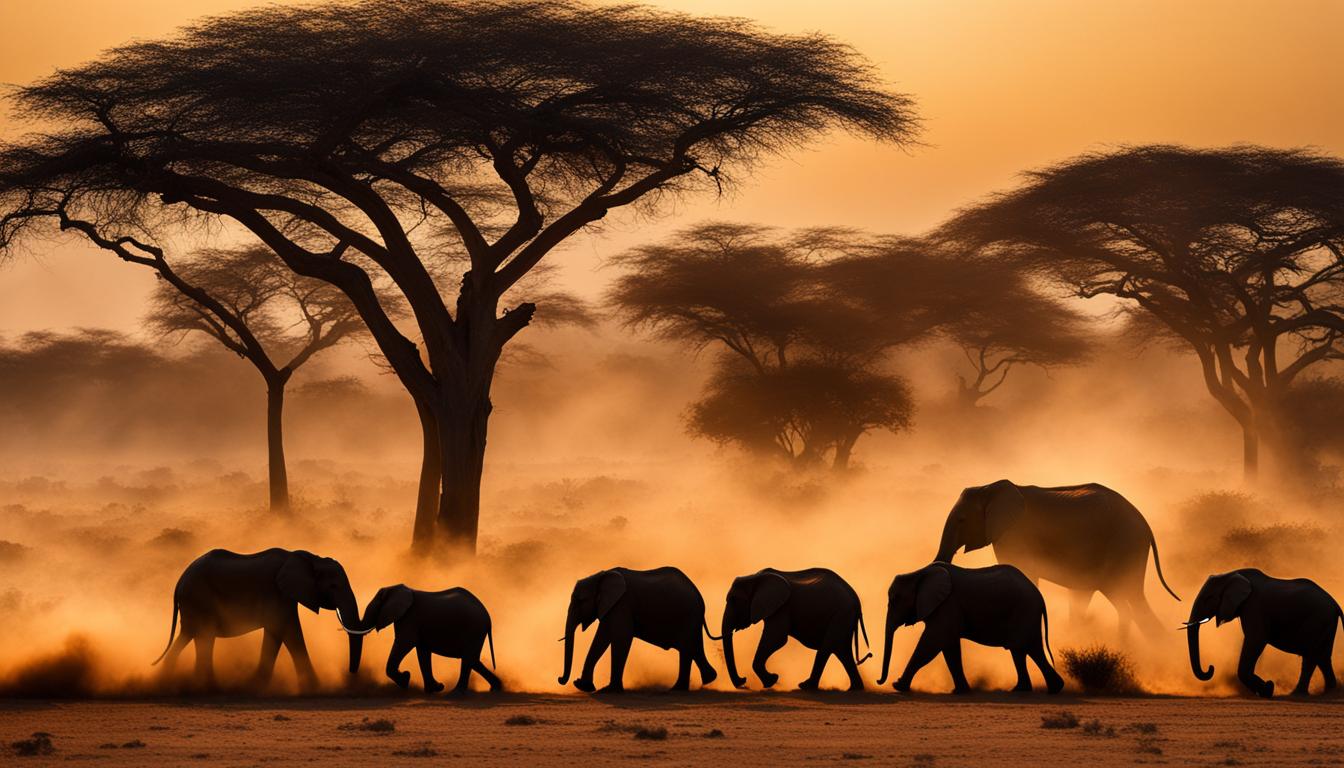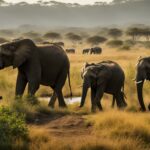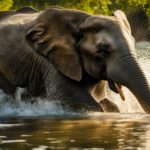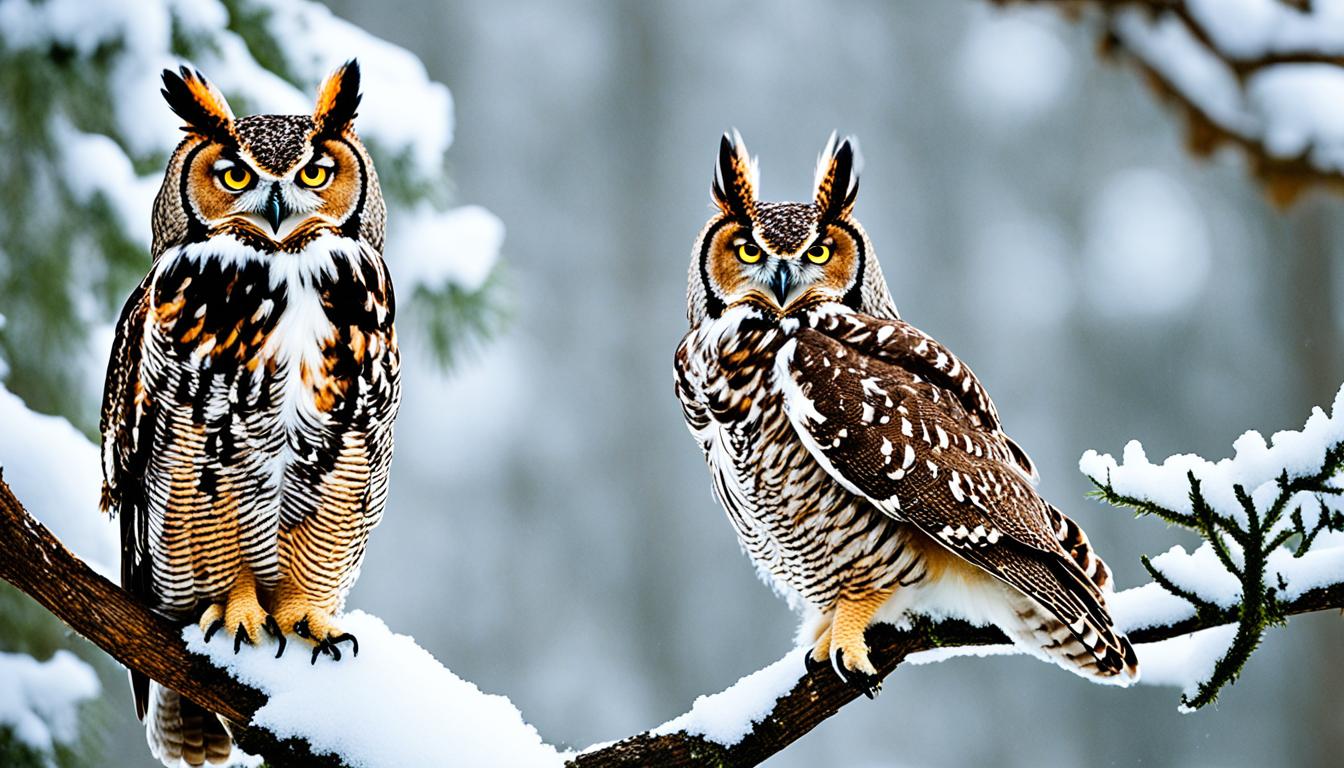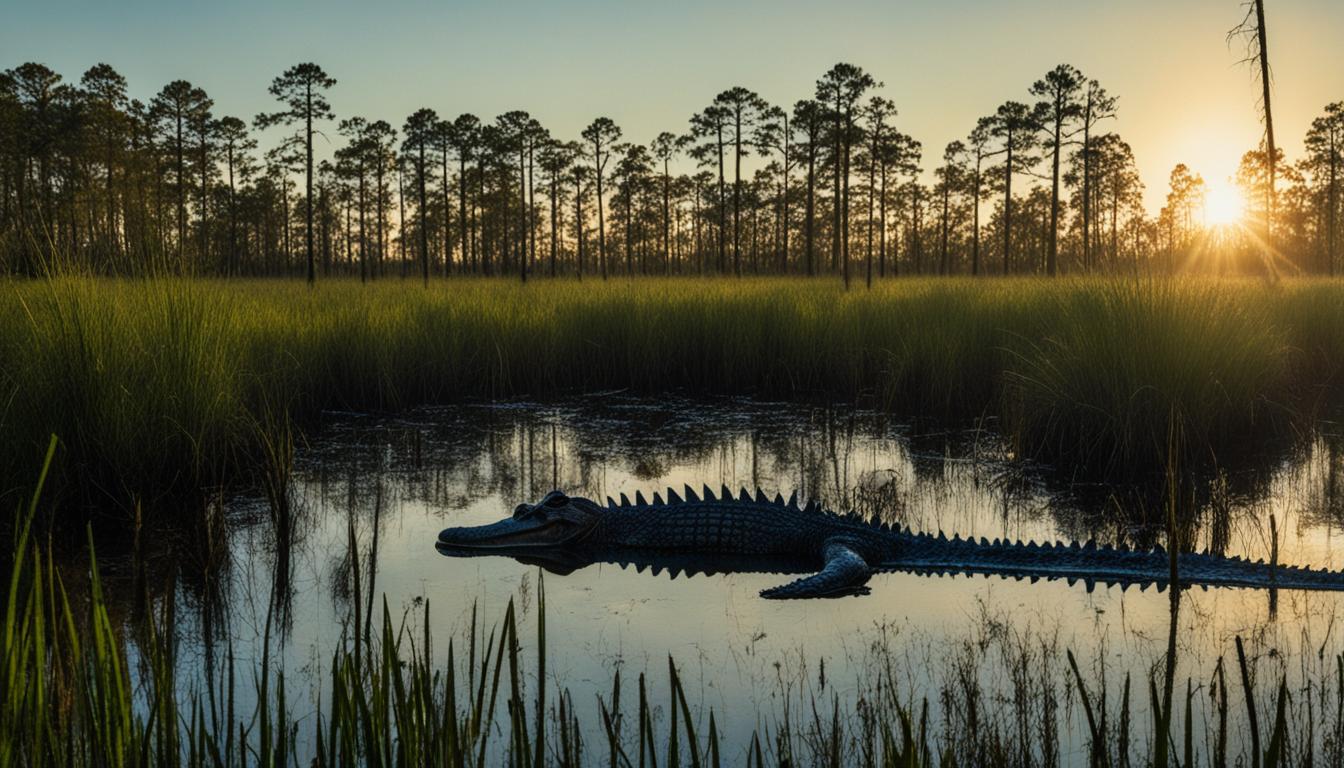Have you ever wondered if elephants migrate? In this article, we will explore the fascinating world of elephant migration and uncover the factors that drive their seasonal movements. From the vast savannas of Africa to their long-distance journeys, African elephants have captured the curiosity of scientists and nature enthusiasts alike. Let’s dive into the world of these majestic creatures and discover the secrets behind their incredible migrations.
The Importance of Migration for Elephant Conservation
Migration plays a crucial role in wildlife conservation, including the conservation of elephants. By maintaining functional connectivity and protected areas, conservation efforts can provide a space for elephants to migrate. Understanding migration patterns is important for effective conservation planning. Elephants, like other large mammals, rely on the seasonal distribution of resources such as forage availability and quality. Protecting their natural habitat and ensuring the availability of resources is essential for sustaining elephant populations.
“Elephants, being highly mobile animals, need space and freedom to move in order to thrive.”
As stated by Dr. Jane Smith, a leading wildlife conservation expert, “the migration of elephants is a natural behavior that allows them to access the necessary resources for survival and reproduction. By protecting their migration routes and providing protected areas along their migratory paths, we can help safeguard the future of these magnificent creatures.”
To illustrate the significance of migration for elephant conservation, let’s take a look at the following table:
| Migration Patterns | Conservation Benefits |
|---|---|
| Migratory movement between different habitats | Preserves genetic diversity |
| Maintains ecological balance | Supports biodiversity |
| Ensures access to seasonal resources | Promotes healthy population dynamics |
| Facilitates nutrient cycling | Sustains ecosystem productivity |
From the table, we can see that elephant migration contributes to various conservation benefits, including the preservation of genetic diversity, the support of biodiversity, and the maintenance of ecosystem balance. By recognizing the importance of migration and implementing measures to protect elephant migration routes, we can ensure the long-term survival of these remarkable creatures and maintain the health and vitality of our ecosystems.
The Patterns and Factors Driving Elephant Migration
Elephants are fascinating creatures, and their migration patterns are driven by a variety of factors. One of the key factors influencing elephant migration is the seasonality of the environment. As the availability of resources such as food and water changes with the seasons, elephants must move between different habitats in search of sustenance. In the dry season, when water and food are scarce, elephants may migrate to areas where these resources are more plentiful. Conversely, during the wet season, when water and vegetation are abundant, elephants may move to areas with more favorable conditions.
Rainfall plays a crucial role in determining the timing and extent of elephant migration. Elephants have a remarkable ability to detect changes in the environment, including shifts in rainfall patterns. They are known to migrate in response to rainfall, moving towards areas where water and food sources have become more abundant. This adaptability allows elephants to optimize their foraging and survival strategies in different seasons, ensuring their well-being in changing environments.
Migration is an adaptive response to living in seasonal environments and the spatiotemporal distribution of resources.
Another important factor driving elephant migration is the availability of resources. Elephants have large home ranges and require vast amounts of food and water to sustain their massive bodies. As resources become depleted in one area, elephants may need to travel long distances to find suitable alternatives. The distribution of food, water, and vegetation therefore plays a crucial role in shaping the migration patterns of elephants. Their movements are guided by their innate ability to detect and respond to changes in their environment.
Protecting the natural habitat and ensuring the availability of resources are key factors in sustaining and managing elephant populations. By preserving the habitats that elephants depend on and implementing conservation efforts that prioritize their well-being, we can help ensure the continued survival of these majestic creatures.
Table: Factors Influencing Elephant Migration
| Factor | Description |
|---|---|
| Seasonality | Elephants migrate in response to changes in the seasons, moving towards areas with more favorable conditions. |
| Rainfall | Elephants can detect changes in rainfall patterns and migrate towards areas where water and food sources are more abundant. |
| Resource Availability | Elephants migrate to areas where resources such as food and water are more plentiful, ensuring their survival and well-being. |
| Environmental Changes | Elephants respond to shifts in their habitat caused by factors like human activities and natural disturbances. |
Human-Elephant Conflict and the Impact of Migration
As elephants migrate and move through different areas, they can come into conflict with humans. This conflict arises due to habitat fragmentation and human activities, such as the construction of infrastructure, which disrupt elephant migration routes and lead to increased interactions with humans. These interactions often result in human-elephant conflict, posing a threat to both elephants and humans.
One of the main causes of human-elephant conflict is habitat fragmentation. As human populations expand and encroach upon elephant habitats, the natural corridors and pathways that elephants use for migration are disrupted. This forces elephants to move through areas of human settlements, resulting in crop raiding, property damage, and even casualties. The loss of natural habitat and the restriction of elephant movement increase the chances of encounters with humans and exacerbate the conflict.
To mitigate human-elephant conflict and protect both human and elephant populations, it is crucial to establish and maintain wildlife corridors. These corridors provide safe passage for elephants and allow them to continue their natural migration patterns without coming into frequent contact with human settlements. By creating these corridors, we can reduce the instances of conflict, minimize the loss of crops and property, and ensure the safety and well-being of both elephants and humans.
| Impact of Human-Elephant Conflict | Solutions and Mitigation Strategies |
|---|---|
| Loss of crops and livelihoods Elephants raiding crops can result in significant economic losses for local communities, especially those heavily reliant on agriculture. |
Community-based conservation initiatives Implementing community-based conservation initiatives that involve local communities in decision-making processes can help address the root causes of conflict and promote sustainable coexistence. |
| Property damage and casualties Elephants can cause damage to infrastructure and pose a threat to human lives, leading to injuries or even fatalities. |
Early warning systems and deterrent methods Developing early warning systems and employing deterrent methods, such as bee fences or noise devices, can help reduce human-elephant conflicts by deterring elephants away from human settlements. |
| Negative attitudes and retaliatory killings Human-elephant conflict can result in negative attitudes towards elephants, leading to retaliatory killings and a decline in community support for elephant conservation. |
Education and awareness programs Conducting education and awareness programs to promote understanding about elephant behavior and the importance of their conservation can help foster positive attitudes and enhance community support for conservation efforts. |
The Role of Elephant Migration in Ecosystem Dynamics
Elephant migration plays a crucial role in shaping ecosystem dynamics. As these majestic creatures move across different habitats, they interact with various ecosystems, influencing vegetation patterns, nutrient cycling, and the distribution of other species. Their movements help maintain biodiversity and support the overall health of ecosystems.
When elephants migrate, they graze on different types of vegetation, which can lead to changes in plant composition and structure. This browsing behavior affects the growth and survival of certain plant species, influencing their abundance and distribution. Additionally, elephants disperse seeds through their dung, contributing to the dispersal of plant species and promoting plant diversity.
The presence of elephants also has a significant impact on other wildlife. Their movements create pathways and clearings in forests, providing opportunities for other animals to access resources and facilitating their movements across the landscape. For example, smaller herbivores may follow in the footsteps of elephants to take advantage of the vegetation they have browsed on.
Conservation efforts that focus on protecting elephant migration corridors and their natural habitats are crucial for the overall balance and functioning of ecosystems. By maintaining these corridors, we can ensure that elephants can continue their natural movements and interactions with different habitats, contributing to the preservation of biodiversity and the overall health of ecosystems.
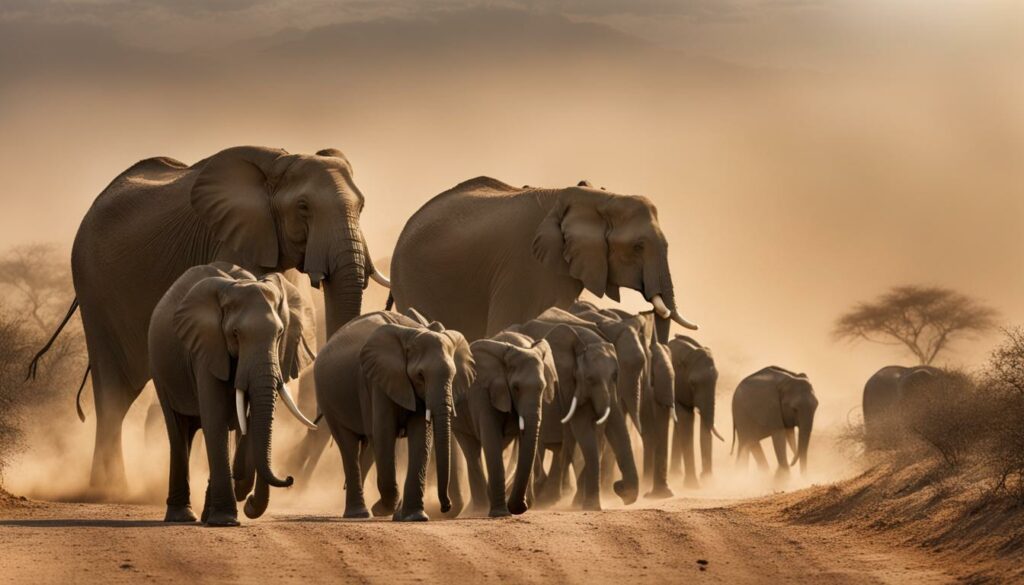
The Impact of Elephant Migration on Ecosystem Functioning
| Ecological Component | Impact of Elephant Migration |
|---|---|
| Vegetation Structure | Elephants browsing on vegetation leads to changes in plant composition and structure. |
| Seed Dispersal | Elephants disperse seeds through their dung, contributing to plant diversity and dispersal. |
| Wildlife Movements | Elephant movements create pathways and clearings, facilitating the movements of other wildlife. |
| Biodiversity | Elephants help maintain biodiversity by interacting with different habitats and ecosystems. |
Conclusion
Elephant migration is a captivating phenomenon that plays a vital role in the conservation of these magnificent creatures. Understanding the patterns and factors driving elephant migration is crucial for effective conservation planning and management. By protecting their natural habitat, maintaining functional connectivity, and managing human-elephant interactions, we can ensure the survival and well-being of elephants while contributing to the preservation of ecosystems.
Human activities, such as habitat fragmentation and human-elephant conflict, pose significant challenges to elephant migration and conservation efforts. To overcome these challenges, it is essential to prioritize the establishment and maintenance of wildlife corridors that provide safe passage for elephants and reduce the chances of encounters with humans.
Conservation efforts should focus on protecting elephant migration corridors, preserving their natural habitats, and promoting sustainable practices that support the coexistence of elephants and humans. By doing so, we can safeguard this captivating animal behavior and continue to learn from and appreciate the important role that elephant migration plays in our ecosystems.
Do Elephants Use Problem-Solving Skills During Migration?
Elephants’ problem-solving abilities come into play during migration as they navigate through various obstacles. These intelligent creatures employ their keen sense of problem-solving to overcome challenges such as crossing rivers, traversing unfamiliar terrain, and finding food sources. Their remarkable memory and social interactions greatly contribute to their successful migration strategies.
FAQ
Do elephants migrate?
Yes, elephants are a partially migratory species, with only some individuals migrating opportunistically, and not every year.
What factors drive elephant migration?
The timing of elephant migration is associated with rainfall and the availability of forage. The drivers of migration are likely a complex interaction between individual traits, density, and the distribution and availability of resources.
How do conservation efforts support elephant migration?
By maintaining functional connectivity and protected areas, conservation efforts provide a space for elephants to migrate. Understanding migration patterns is important for effective conservation planning.
How do human activities impact elephant migration?
Habitat fragmentation and human activities, such as the construction of infrastructure, can disrupt elephant migration routes and lead to increased interactions with humans, resulting in human-elephant conflict.
What role does elephant migration play in ecosystem dynamics?
As elephants migrate, they interact with different habitats and ecosystems, influencing vegetation patterns, nutrient cycling, and the distribution of other species. Their movements help maintain biodiversity and support the health of ecosystems.
How can we ensure the survival and well-being of elephants?
By protecting their natural habitat, maintaining functional connectivity, and managing human-elephant interactions, we can ensure the survival and well-being of elephants and contribute to the preservation of ecosystems.

